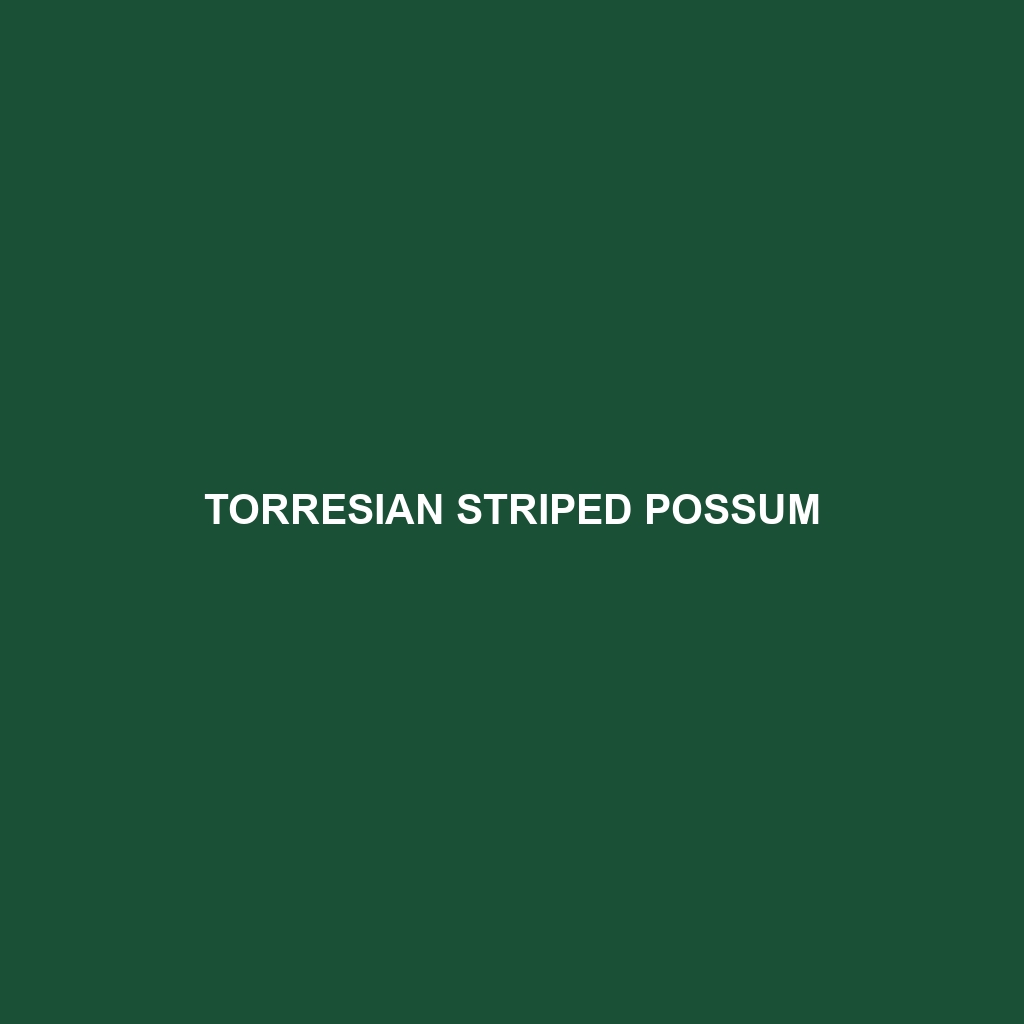Torresian Striped Possum: A Detailed Description
The Torresian Striped Possum (Dactylopsila trivirgata) is a remarkable and unique marsupial native to the tropical rainforests of northern Australia, New Guinea, and nearby islands. Known for its striking black and white striped fur, this possum is not only visually distinctive but also boasts several unique adaptations that make it a fascinating subject of study.
Physical Characteristics
Size: The Torresian Striped Possum is a medium-sized marsupial, with an average body length of 30-38 cm (12-15 inches) and a tail that can be nearly as long, ranging from 32-40 cm (13-16 inches). They typically weigh between 400-700 grams (0.88-1.54 pounds).
Coloration: This possum’s most notable feature is its striking fur pattern, which consists of three white stripes running longitudinally along its black back. The belly is usually a lighter color, often white or cream. The facial fur is also black and white, providing excellent camouflage in the dappled light of the rainforest understory.
Special Features: One of the most intriguing features of the Torresian Striped Possum is its elongated fourth finger, which is used to extract insects and larvae from tree bark and crevices. Additionally, they have large, expressive eyes adapted for nocturnal activity and a prehensile tail that aids in climbing.
Behaviors
Social Interactions: The Torresian Striped Possum is primarily solitary, although they may sometimes be seen in pairs or small family groups, especially during the breeding season. They communicate through a series of vocalizations, including clicks and hisses, and use scent marking to establish territory.
Feeding Habits: This species is omnivorous, with a diet that includes insects, particularly wood-boring larvae, fruits, and nectar. They are specialized for extracting insects from wood, using their long fourth finger and powerful jaws to break open bark and reach their prey.
Ecological Roles: The Torresian Striped Possum plays a vital role in its ecosystem by controlling insect populations and aiding in the pollination of various plant species through their feeding on nectar.
Habitats
Natural Habitat: This possum inhabits the tropical rainforest regions of northern Queensland, Australia, New Guinea, and surrounding islands. They prefer dense, wet forests with abundant tree cover, which provides both food and shelter.
Adaptations: Adapted for an arboreal lifestyle, they have strong, sharp claws for climbing and a prehensile tail that helps them navigate the treetops. Their nocturnal nature allows them to avoid many predators while exploiting food resources that are more abundant at night.
Conservation Status
Current Status: The Torresian Striped Possum is currently classified as “Least Concern” by the IUCN Red List due to its wide distribution and relatively stable population. However, habitat destruction and fragmentation due to logging and land conversion pose ongoing threats to their habitat.
Conservation Efforts: Efforts to conserve this species focus on protecting their rainforest habitat through the establishment of protected areas and sustainable forestry practices. Research and monitoring programs are also essential to ensure their continued survival.
Fascinating Fun Facts
Unique Dentition: The Torresian Striped Possum has a unique dental arrangement, with enlarged lower incisors and molars adapted for crushing insect exoskeletons and extracting larvae.
A Keen Sense of Smell: These possums have a highly developed sense of smell, which they use to detect food hidden beneath tree bark and within crevices.
Cultural Significance: In some indigenous cultures of New Guinea, the Torresian Striped Possum is considered a symbol of good fortune and is sometimes featured in traditional stories and art.
In conclusion, the Torresian Striped Possum is a captivating species with a range of fascinating attributes. From its distinctive appearance and specialized feeding habits to its important ecological role and conservation status, this marsupial offers a wealth of intriguing information for anyone interested in the natural world.
